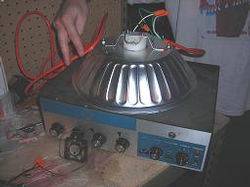see note below10k - [B said:Original OG FAQ[/B] Viewed: 590 times Rated by 48 users: 9.40/10]

How do I convert a home security light into a remote ballast grow light?
Contributed by: Spliffco, Inc.
For some reason growlight manufacturers are completely ignoring the small, personal grower. A quick look around Overgrow and you can see some very respectable bud being grown under 150's, and even 70 watt HPS lights. But the smallest ready made remote ballast growlight you can buy is a 250 watter, and they usually cost well over $150 (US).
So, as usual in the medicinal herb growing world, you need to take matters into your own hands.
Here’s how to turn a 150 watt HPS security light available at most Home improvment stores, into a nice remote-ballast grow light.
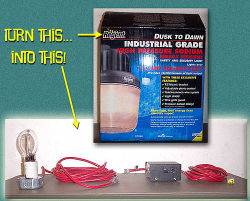
Materials & Tools:
MATERIALS
Regent GT150H, (About $79)
Heavy Duty extension cord of suitable length
One heavy duty grounded electrical plug end (male)
Electrical box*
see note below this is not always required - many people have found that leaving the ballast untouched inside the enclosure it came with is easier and doesn't require buying a separate box, certainly in the one this tutorial was done with this makes sense but with the vapor type lights and even the mini-floods this is not required and may in fact increase risk of humElectrical box plate
Romex cable connectors (3)
Wire nuts
Bolts, nuts washers
Strip of metal to secure ballast
Project case from Radio Shack ($6.99) #270-253A
TOOLS
5/16 nut driver (for removing parts from the casing -- regular pliers will work)
Philips head screwdriver
Regular screwdriver
Hammer
Power drill and assorted bits
Metal file
Wire cutters
Utility knife or wire stripper
Diagonal Pliers
Pliers
Wiring Diagram
Be careful...
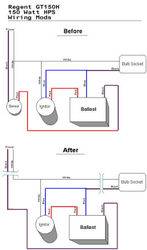
Remove guts
Remove the guts from the casing - bulb socket, ignitor, light sensor socket, ballast. The ballast was glued to the casing. I heated the casing for a couple of minutes on an oven burner (high), and when it was getting too hot to hold, I put it on the floor and wedged a hammer between the ballast and casing and popped it out gently. **

REMOVE LIGHT SENSOR
These security lights are designed to automatically turn on when it gets dark, so there is a built in light sensor that needs to be removed.
Remove all wire nuts.
Disconnect the white wire that comes out of the sensor (currently connected to all 3 other white wires).
Disconnect the black wire that comes out of the sensor (currently connected to the black “power in” wire).
The red wire coming out of the sensor is currently connected to the black wire coming out of the ballast. Remove the red wire, and then connect the black wire coming out of the ballast to the black “power in” wire.
Reattach wire nuts (there were 5 originally, now you only need 4).
Refer to the wiring diagram!

WIRE THE SOCKET
The socket on this particular light had some metal wiring connectors that stuck up and made it impossible to attach to the electrical plate without some modification (sorry no photo). Just pull the black and white wires off of the connectors, and cut the connectors down flush with socket base with diagonal pliers. Now loosen the connectors (screws inside the socket), slip the wires under them and tighten them back down. Please use some plastic electrical tape on the end of the socket to prevent any chance of the metal from the connectors making contact with the electrical box cover plate.
Secure the cord in the electrical box with a romex cable connector and wire it to the socket: black to black, white to white, secure with wire nuts. Some electrical boxes have a green screw inside to fasten ground wires, use that if yours has one, otherwise fasten the green ground wire to the box using one of the cover plate screws when you tighten the cover plate.

WIRE THE REMOTE BALLAST
Hopefully you can see the wiring clearly in the photo, but if not, refer to the wiring diagram for details.
You’re going to have to cut some holes in the Radio Shack project box for the power cords and some bolts to hold the ballast, ignitor and ground wires down.
I used a short length of metal (plumbing department) to secure the ballast. The ignitor had a notch that made it easy to bolt down. The ground wires from both electrical cords are screwed to the base of the box.
Cut a short length off the socket (female) end of the extension cord and wire it appropriately (again - see diagram). Wire the remaining electrical cord, including the grounded male plug to the other end of the box.
Use a tie wrap to bundle up the wires in the box and try to keep them away from the ballast, which will heat up during use.
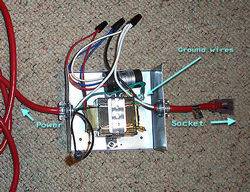
TEST IT!
If you've done everything right, it should light.
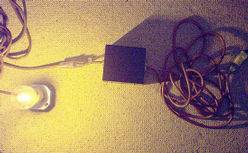
Now, build a reflector and you’ve got a nice little custom grow light.
Safety Warnings:
Always wire the male plug to the bulb socket and the female receptacle to the ballast to avoid possible electrocution! Always use an all metal project box which already has ventilation cooling slots, or if your project box has none, please cut adequate cooling slots, or drill several vent holes in the ballast enclosure (project box) to allow the heat to escape the box. Not adding the cooling slots or holes, could result in failure of the insulation and/or the transformer. Also, please be sure the enclosure is located in a well ventilated area to aid cooling.
OK and for those who have a capacitor in the system here's a wiring diagram for that.
This is what I used for a ballast/starter enclosure. I was able to fit both items in one of these metal boxes (4" square) and a metal lid was added - very inexpensive and works well for me. I have the regents compact 150 found at lowes fwiw.
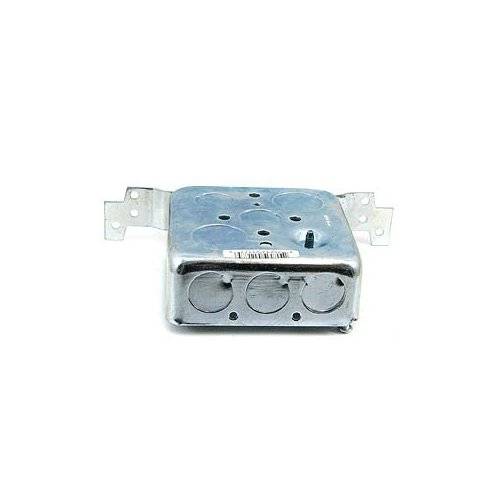
If you cannot fit everything in here you can also find other enclosure boxes at home depot (near the house fuze boxes - they're in cardboard boxes so read the labels) for a bit more $$ but they are nice and some are vented and some are made for outdoors.
I just wanted to add this as people may be thinking that they need to get the radio shack box because it was what is in the above tutorial - this is not the case and I myself found the radioshack project box to be inferior to what can be had in the electrical department at a home improvement store.
Another option is to leave the ballast in the original case and use that as a ballast box. This makes the wiring very easy as you're just splicing a section of heavy duty extension cord, extending the wires to the socket as well as splicing in another section to extend the wires to the plug - i.e. you don't have to follow a wiring diagram.
ReeferDan said:
Drewpdog said:i did it like reefer dan and drilled out the case it came with it actualy worked out realy nice. I cut off a 2 foot section of the 9 foot cord i had wire the fixture to the existing enclosure and then wired in the plug.
And finally a quick run down of where you can get a HPS security or miniflood light to do this with by wattage;
first cash and carry in the usa
50w - homedepot
70w - pretty much anywhere - this seems to be the most common
100w - homdepot intermittenly maybe lowes
150w - lowes
in Canada I understand you can find 150w at rona (hopefully someone up north can fill me in with some others)
not sure on UK
online in the usa e cono light is a good choice for a 150watter that many people have used w/o issue - here's an offsite link to the best deals
this is a 150w for $20 and that includes a lamp (bulb for an HID is called a lamp - this is awfully confusing for folks at first... ) this is the one above that reeferdan used
http://www.e-conolight.com/Product/EProductDetail.asp?ProductFamilyID=7&FGNumber=E-MT6H151G
another option online for venture ballast kits which include capacitors - which help to maximize the power factor of the ballast - where the power factor is a measure of how much current your ballast draws over how much it uses - having a bad power factor increases the load on your circuit (but not you bill) to the point where the 150 is putting 300 watts of load on your circuit (but again not costing for 300 watts!! ) - if you've got older wiring or lots and lots of other draws on the circuit or are planning on running a half dozen lights it could be a concern.
These guys have any size ballast from 35watt on up - actually you could put together a 400 watter pretty cheap ... you'll also need a socket - medium is recommended for 150watt and smaller - although 150s can be mogul or medium - larger lamps are all mogul. they have them under
Home » Catalog » Light Fixture Sockets » HID Lamp Sockets
pipedream said:Energy efficient high-quality HID lighting parts at good prices
www.businesslights.com
Last edited:




